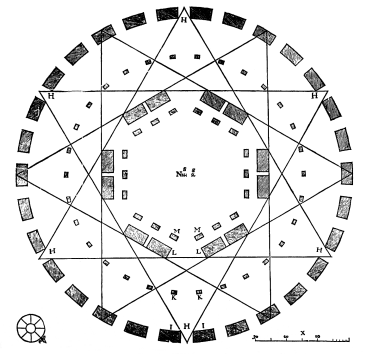
| Coelum Brittanicum: Inigo Jones and Symbolic Geometry |
|---|
Associate Professor of Architecture
University of Nebraska-Lincoln
Room 237 Arch Hall West
Lincoln, NE 68588-0107 USA
That Stonehenge was a Roman circular temple in Tuscan order dedicated to Coelum, the god of the heavens, was Inigo Jones's response to King James I's inquiry (1620), and appeared in a posthumous publication (1655) by John Webb, which drew extensively from mythology, history, and astrology. Jones's Stonehenge interpretation was an important part of his grand vision Coelum Britannicum, a congratulatory symbolism for the monarch, which drew a macro- and microcosm parallel between the heavens and Britain. This particular symbolism was favored by the architect for a number of reasons: it presented a specific geometrical scheme and therefore turned immediately into an architectural form; and as a consequence it let the architect take an ideal position in relation to the monarch, that is, the supplier of his wisdom. It appeared in other designs by the architect and arguably in works by others under his influence. This paper will draw from: (1) the role of mathematics in architecture, stated by Robert Recorde and John Dee among others; (2) Jones's written statements in the above publication and in the margins of books he owned; (3) works by Jones, namely architectural design for James's catafalque (1625) and stage and costume designs for a court masque Coelum Britannicum (1633/4); and (4) court paintings by Peter Paul Rubens and Anthony Van Dyck.

Inigo Jones, "Groundplot" of Stonehenge, in The Most Notable Antiquity of Great Britain, vulgarly called Stone-Heng, on Salisbury Plain, Restored (1655)
ABOUT THE AUTHOR
Rumiko Handa has a Bachelor of Architecture from the University
of Tokyo, and a Master of Architecture, a Master of Science in
Architecture, and a Doctor of Philosophy degrees from the University
of Pennsylvania. She is a licensed architect (Japan), and taught
architecture at the University of Michigan, Ann Arbor, and at
Texas Tech University. She is currently an Associate Professor
and the Graduate Committee chair of the Department of Architecture
at the University of Nebraska-Lincoln. Her research on the interpretation
of megaliths has been supported by the Graham Foundation for
Advanced Studies in the Fines Arts and the University of Nebraska
Research Council.
|
Rumiko Handa, "Coelum Brittanicum: Inigo Jones and Symbolic Geometry", pp. 109-126 in Nexus IV: Architecture and Mathematics, eds. Kim Williams and Jose Francisco Rodrigues, Fucecchio (Florence): Kim Williams Books, 2002. http://www.nexusjournal.com/conferences/N2002-Handa.html |
|
|
|
|
